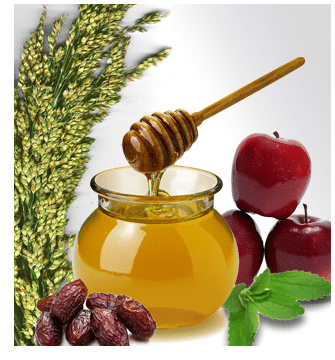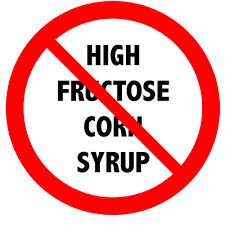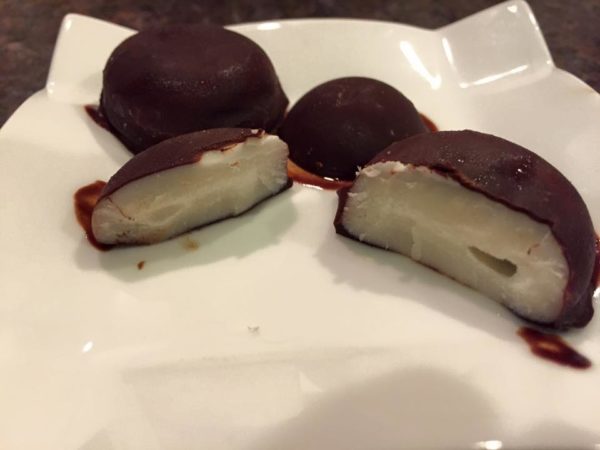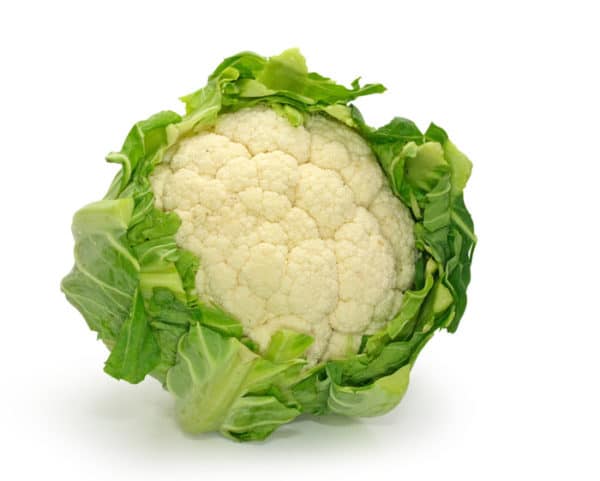

- Fun
- Fitness
- Food
- Flexibility
The first in the series, The Physiology of Fun, covered how important it is to have laughter and fun in your life. For this article, I’d like to focus on FOOD. A specific food in particular, that makes life sweeter and many “fun” things are associated with it: sweeteners.
Face it. Sweet stuff is really appealing…and addicting. You probably know by now that sugar contributes to just about every major disease.
Perhaps you turn to sweetened desserts to make up for lack of sweetness in other aspects of your life. Or maybe you just enjoy the taste. In any case, you deserve some sweetness in your life…every day! So be sure to get some, whether from food or from the special people and relationships in your life. And wouldn’t it be great to get the sweetness you deserve without compromising your health?
I’d like to start by sharing some facts about sugar…to help you naturally turn away from the addicting sweet stuff.
Besides contributing to obesity, diabetes and tooth decay (as if that’s not enough), the hazards of refined white sugar and high fructose corn syrup are wide-spread. Articles and books abound describing the hazards of sugar consumption. The link between sugar and serious disease has been published in the scientific literature for a very long time.
Sugar has been known to contribute to disease as far back as the early 1900’s. In the 1930’s, the Nobel Prize was awarded to Otto Warburg for discovering the connection between sugar and cancer. Cancer is a little more serious than obesity and dental cavities, yet the connection is not often mentioned in mixed company.
In the 1950’s the work of Dr. Coda Martin strongly related sugar to serious disease. The complete article can be found at:
http://www.globalhealingcenter.com/refined-sugar-the-sweetest-poison-of-all.html
Here’s an excerpt:
“Refined sugar is lethal when ingested by humans because it provides only that which nutritionists describe as “empty” or “naked” calories. It lacks the natural minerals which are present in the sugar beet or cane. In addition, sugar is worse than nothing because it drains and leaches the body of precious vitamins and minerals through the demand its digestion,detoxification and elimination makes upon one’s entire system. So essential is balance to our bodies that we have many ways to provide against the sudden shock of a heavy intake of sugar.”
More recently, research has connected sugar to a broad spectrum of modern ills.
Sugar is a major culprit obesity, which effects 34 % of Americans (another 32% of Americans are considered overweight) and contributes to such killers as heart disease, diabetes and cancer. A report from the American Heart Association published in the journal, Circulation on July 23rd, 2002, suggests that high sugar diets may contribute to an elevated risk of heart disease, lower your HDL cholesterol, increase your LDL cholesterol and raise your level of triglycerides.
Sugar can also impair the structure of DNA, cause hyperactivity, anxiety, difficulty concentrating, and crankiness in children, weaken eyesight, contribute to eczema, interfere with the absorption of protein, decrease the activity of your T cells, which contributes to the reduction in defense against bacterial infection, contribute to candida (yeast) infections and contribute to osteoporosis.
These are just a few good reasons to decrease or eliminate sugar. There are many more. In fact, there is a list of 146 reasons sugar is ruining your health in the book, Lick Your Sugar Habit, by Nancy Appleton, PhD, clinical nutritionist. And Dr. Scott Olson ND, in his ground breaking book, Sugarettes, claims that sugar is responsible for more deaths than cigarettes, and just may be more addicting!
Yet in spite of all the evidence against it, sugar remains by far the most popular food in the world. Americans insist on feeding their kids pure sugar to start their day…Captain Crunch, Coco Crispies and Frosted Flakes are just a few of the most popular sugar laden breakfast foods.
The average American consumes almost 152 pounds of sugar in a year. This is equal to 3 pounds, or 6 cups, EVERY week — 42.5 teaspoons of sugar per day! And since my family doesn’t consume any, so someone out there is eating our share!
So why do we continue to eat sugar, in spite of its bad reputation? Because we are addicted! And because it tastes good. And it gives you a temporary feeling of well-being!
White sugar and high fructose corn syrup have no nutritional value and should never be consumed.
Now, for the bad news about the popular “healthy” sweeteners…
Unfortunately, though, most of sugar’s relatives, including agave, honey, molasses, maple syrup, sugar cane crystals, pure sugar cane juice, barley malt, rice syrup, evaporated cane juice, dried cane juice, date palm sugar, yacon syrup, and all products ending in “-ose” (such as sucrose, dextrose, glucose, fructose, and levulose) are best minimized or avoided completely.
After my major health challenges when I was in my 20’s, I gave up sugar cold turkey. I went from a complete sugar addict, eating Oreos by the package and ice cream by the pint to nothing. Zero, zip, nada. Sure, I ate my share of dates and sweet fruit, but nothing crossed my lips if it ended in “ose” or was a purified sweetener poured from a bottle or spooned from a bag.
Then came raw agave nectar…the answer. Or was it?
That went on for 20 years or so, until I discovered raw agave nectar. Touted as a low glycemic, high nutrient content natural sweetener, agave appealed to me. Until I discovered agave, I had to settle for raw dessert toppings that were tan in color, rather than white, because while delicious and sweet, dates change the color of a beautiful white coconut cream to tannish brown.
With agave in my toolkit, I was able to create desserts that fooled even the most discriminating sugar addict. From vanilla “ice cream” (made from cashews, coconut and macadamia nuts) to decadent cheese cake, my desserts were lusted after by all who had the joy of tasting them.
My direct experience and that of my patients and students has been that agave is less disruptive to blood sugar than table sugar and high fructose corn syrup, and it’s less addictive. My dessert class participants, even the most severe sugar addicts, would quickly become satisfied and stop, whereas with the mainstream desserts they would overindulge.
Then I began to see scattered reports about the dangers of agave, equating it with high fructose corn syrup, and I began to get concerned that I was using and promoting something that may not be the highest and best. My eyebrows raised and my disappointment stirred, yet I continued to use it while I researched further. The more reports I saw, the less enamored I became with agave. I started to replace the agave with dates in all but my white recipes.

After I read a report report from the Weston Price Foundation and a similar one on Natural Health News, my motto “When in doubt, leave it out” took over. I started reading labels more carefully, and shunned products containing agave and any sweeteners other than whole foods.
Here’s a summary of the research:
Smart consumers and health enthusiasts are well aware of the health threats that are posed by consumption of high fructose corn syrup. The fructose in HFCS is not recognized in the human Krebs cycle and cannot be used for to make energy. Instead, it’s converted to triglycerides and body fat. A study published in the Journal of Clinical Endocrinology and Metabolism found that obese people who drank a fructose-sweetened beverage with a meal had triglyceride levels almost 200 percent higher than obese people who drank a glucose-sweetened beverage with a meal. Chronic high triglycerides means insulin resistance, inflammation and heart disease.
While high fructose agave syrup won’t spike your blood glucose levels, the author believes the fructose in it may cause mineral depletion, liver inflammation, hardening of the arteries, insulin resistance leading to diabetes, high blood pressure,cardiovascular disease and obesity.
My decision to completely shun white sugar and high fructose corn syrup came first. After a short love affair with agave, I decided to return to only whole foods as sweeteners.
More recently, I have determined that many people, including me, need to limit or avoid dried fruit sweeteners, like dates and raisins and even high glycemic fruits like bananas, because they cause blood sugar spikes.
Blood sugar spikes lead to a condition called insulin resistance, which is a leading cause of belly fat, fatigue and brain fog, as well as serious conditions like heart disease, diabetes and cancer.
Help! How Do I Choose?
That is a great question. Don’t worry and don’t freak out! First things must come first. If you’ve shunned all white sugars and high fructose corn syrup, you are off to a great start. Obviously, you still need to know where your blood sugar levels are, and if you are insulin resistant. Then, you need to know how to make great recipes that contain low-glycemic sweeteners that are still delicious, nutritious, and FUN (I didn’t forget about that).
Stay tuned for Part 2 of this article where I will compare and contrast all the sweeteners, including low glycemic ones. This will make it easier for you to decide for yourself.
You can also tune into this Week’s Vibrant Health Solutions Radio Show (replay will be available as well), where I briefly go over a “report card” of the types of sweeteners that can be used. Vibrant Health Solutions Radio: The Sweets Episode: The Good, The Bad, and The Bitter Truth About Sweeteners
To empower you even further, I created a live Transformational 3-day event in Austin, Texas on March 22-24, 2013 called Spring Into Vitality.
- At this event you will learn not only where your glucose levels currently are, but also how to measure them properly when you get home.
- You will learn if the past sweeteners have depleted you and given you deficiencies via trace mineral testing.
- You will learn how to balance your hormones, and lower cortisol which both have balancing blood sugar effects.
- You will enjoy wholesome, healthy foods for three days (with the VIP package) that will have you feeling like a million bucks.
- You will get to taste test several sweeteners right there at our Nourishment Booths during the event.
- You will learn many delicious recipes for low glycemic desserts, elixirs, and even candies that satisfy your sweet tooth and then some!
- And so much more…
Register now, and demystify the whole sugar controversy by discovering what works in a healthy way for your own unique body chemistry as well as your taste buds:
Spring Into Vitality
Whether you choose to include sweeteners in your daily diet, do include sweetness in your daily life. Sweetness and fun are vital elements of vibrant health.
Love, Health and Joy,
Dr. Ritamarie
How have you used healthy sweeteners in your life? Comment below.
Share this:

Are you feeling stuck?
Do you feel as if something is missing from your practice that's keeping you from delivering breakthrough outcomes for your clients?.
Recent Posts
Our Programs
Nutritional Endocrinology Practitioner Training (NEPT)
The Mastery and Certification tier is our flagship program and provides everything you need to feel confident as a practitioner who knows how to get results that lead to healthy and happy clients.
Functional Assessment Mastery
Explore the relationships between the most important hormones and their relationship with nutrition.
Functional Nutrition Mastery
Learn how to support your clients to eat and supplement in a way that reduces and eliminates chronic symptoms.
Medical Disclaimer: The information on this website is not intended to replace a one-on-one relationship with a qualified health care professional and is not intended as medical advice. It is intended as a sharing of knowledge and information from the research and experience of Dr. Ritamarie Loscalzo, drritamarie.com, and the experts who have contributed. We encourage you to make your own health care decisions based upon your research and in partnership with a qualified health care professional.
Disclosure: Sometimes (but not always), when I share resources in my programs, newsletter, and on my website, I'm using an affiliate link, which means I do make money if you buy. My credibility is extremely important to me; therefore, I only endorse the products, services, and people I believe in. DrRitamarie.com is independently owned and the opinions expressed here are my own.
Click here to see our Privacy Policy.












Hi Dr Ritamarie!
Great article. I, too, now rarely use agave (it did seem like the answer to everything a while ago, didn’t it?!).
Instead, I’ve been using a little good-quality stevia, but now I hear reports that it has been linked with infertility (so should I be giving it to my pre-teen girls?) and headaches.
I’ll be interested to hear your opinion on this – I imagine you’ll be covering this in part 2 of this article?
Thanks for all that you do!
Joanne
[…] would be fresh, whole and brimming with nutrition, rather than processed and filled with flour, sugar and unhealthy […]
[…] the post The Sweetest of Them All (Part 1) I told you all about the dangers of sugar, raw agave nectar, artificial sweeteners, and high […]
[…] a low-glycemic porridge, leave out the date paste and a half dropper of liquid stevia […]
[…] you could use some delicious and satisfying desserts, without the use of any high-glycemic sweeteners such as dates, raisins, maple syrup, honey, etc., […]